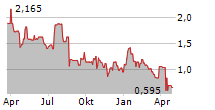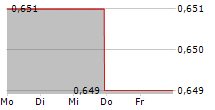- Phase 1/2 trial expected to initiate in 2H 2025 in patients with BEST1 inherited retinal disease
RESEARCH TRIANGLE PARK, N.C., Aug. 18, 2025 (GLOBE NEWSWIRE) -- Opus Genetics (Nasdaq: IRD), a clinical-stage biopharmaceutical company developing gene therapies for the treatment of inherited retinal diseases (IRDs) and small molecule therapies for other ophthalmic disorders, today announced that the U.S. Food and Drug Administration (FDA) has accepted its Investigational New Drug (IND) application for OPGx-BEST1, a gene therapy for the treatment of bestrophin-1 (BEST1)-related IRD.
Best disease, or vitelliform macular dystrophy, is a rare, inherited retinal condition causing macular degeneration by mutations in the BEST1 gene, leading to progressive vision loss and, in some cases, blindness.
With this IND clearance, Opus Genetics plans to initiate a Phase 1/2 clinical trial in the second half of 2025. The multi-center, open-label study will evaluate the safety, tolerability, and preliminary efficacy of a single subretinal injection of OPGx-BEST1 in patients with genetically confirmed BEST1-related IRD. The trial will also explore biological activity through functional and anatomical endpoints, including changes in visual function and retinal structure.
"The FDA's clearance of our BEST1 IND is a significant step forward for the IRD community and for our mission at Opus Genetics focused on restoring vision for patients," said George Magrath, M.D., Chief Executive Officer, Opus Genetics. "BEST1-related IRDs have no approved treatments today, leaving patients and families with uncertainty about the future of their vision. The OPGx-BEST1 trial will be our third ongoing clinical program, reflecting the depth of our pipeline and our commitment to advancing multiple therapies in parallel for patients with urgent, unmet needs."
OPGx-BEST1 leverages Opus Genetics' proprietary AAV-based gene therapy platform, designed to deliver a functional copy of the BEST1 gene directly to the retinal pigment epithelium (RPE) cells where the defective gene resides. The program builds on extensive preclinical work demonstrating restoration of BEST1 protein expression and improved retinal function in relevant disease models.
About Opus Genetics
Opus Genetics is a clinical-stage biopharmaceutical company developing gene therapies for the treatment of inherited retinal diseases (IRDs) and small molecule therapies for other ophthalmic disorders. The Company's pipeline features AAV-based gene therapies targeting inherited retinal diseases including Leber congenital amaurosis (LCA), bestrophinopathy, and retinitis pigmentosa. Its lead gene therapy candidates are OPGx-LCA5, which is in an ongoing Phase 1/2 trial for LCA5-related mutations, and OPGx-BEST1, a gene therapy targeting BEST1-related retinal degeneration. Opus Genetics is also advancing Phentolamine Ophthalmic Solution 0.75%, a partnered therapy currently approved in one indication and being studied in two Phase 3 programs for presbyopia and reduced low light vision and nighttime visual disturbances. The Company is based in Research Triangle Park, NC. For more information, visit www.opusgtx.com.
Forward-Looking Statements
This press release contains forward-looking statements within the meaning of the Private Securities Litigation Reform Act of 1995. Such statements include, but are not limited to, expectations regarding us, our business prospects and our results of operations and are subject to certain risks and uncertainties posed by many factors and events that could cause our actual business, prospects and results of operations to differ materially from those anticipated by such forward-looking statements. Factors that could cause or contribute to such differences include, but are not limited to, those described under the heading "Risk Factors" included in our Annual Report on Form 10-K for the fiscal year ended December 31, 2024, our Quarterly Reports on Form 10-Q for the quarters ended March 31, 2025 and June 30, 2025, and our other filings with the U.S. Securities and Exchange Commission. Readers are cautioned not to place undue reliance on these forward-looking statements, which speak only as of the date hereof. These forward-looking statements are based upon our current expectations and involve assumptions that may never materialize or may prove to be incorrect. Actual results and the timing of events could differ materially from those anticipated in such forward-looking statements as a result of various risks and uncertainties. In some cases, you can identify forward-looking statements by the following words: "anticipate," "believe," "continue," "could," "estimate," "expect," "intend," "aim," "may," "ongoing," "plan," "potential," "predict," "project," "should," "will," "would" or the negative of these terms or other comparable terminology, although not all forward-looking statements contain these words. We undertake no obligation to revise any forward-looking statements in order to reflect events or circumstances that might subsequently arise.
Contacts:
Investors
Jenny Kobin
Remy Bernarda
IR Advisory Solutions
ir@opusgtx.com
Media
Kimberly Ha
KKH Advisors
917-291-5744
kimberly.ha@kkhadvisors.com
Source: Opus Genetics, Inc.



